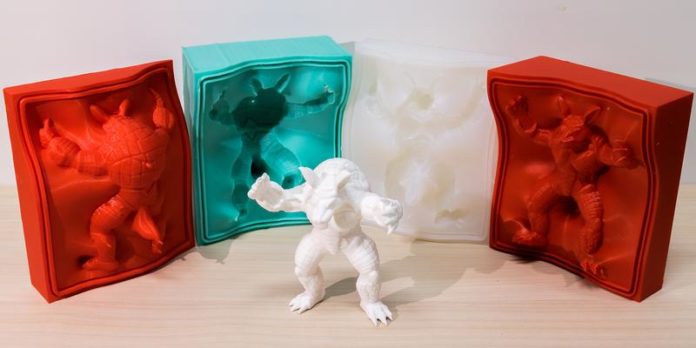Scientists at the Istituto di Scienza e Tecnologie dell’Informazione (ISTI-CNR) and the Institute of Science and Technology Austria (IST Austria) have now developed a new method that automatically finds the best way of designing the molds but also delivers templates for so-called metal molds: Rigid molds that are 3D-printed and that are used to fabricate the optimized silicone molds.
The user just needs to transfer the coveted shape to the computer. The tool, at that point, helps in two stages: first, it figures where the cuts should be put for an ideal outcome.
This implies the smallest conceivable number of mold pieces is utilized and that the object can be securely expelled from the shape once it is done.
After that, the computer goes above and beyond: it naturally makes the 3D-printable layouts of the metal mold, a container utilized to create the perfect silicone mold pieces.
The printed metamolds are then filled with liquid silicone to deliver the last silicone mold pieces, which are reusable and permit to cast of numerous imitations.
Scientists noted that this tool will be useful for small series, such as jewelry design or art.
Thomas Alderighi from ISTI-CNR, the first author of the study, said, “When you are not producing millions of copies, then this is the method of choice.”
As noted by Paolo Cignoni, research director at ISTI–CNR, an interesting field of application is the production of a small number of replicas for museums that visitors could handle for a deeper experience of the exhibition.
The final silicone mold pieces can then be used to create replicas from a variety of different materials, including traditional ones like various types of resin, but also unconventional ones like chocolate or ice.
Journal Reference
- Thomas Alderighi, Luigi Malomo, Daniela Giorgi, Nico Pietroni, Bernd Bickel, and Paolo Cignoni. 2018. Metamolds: computational design of silicone molds. ACM Transactions on Graphics. 37, 4, Article 136 (August 2018), 13 pages. DOI: 10.1145/3197517.3201381
